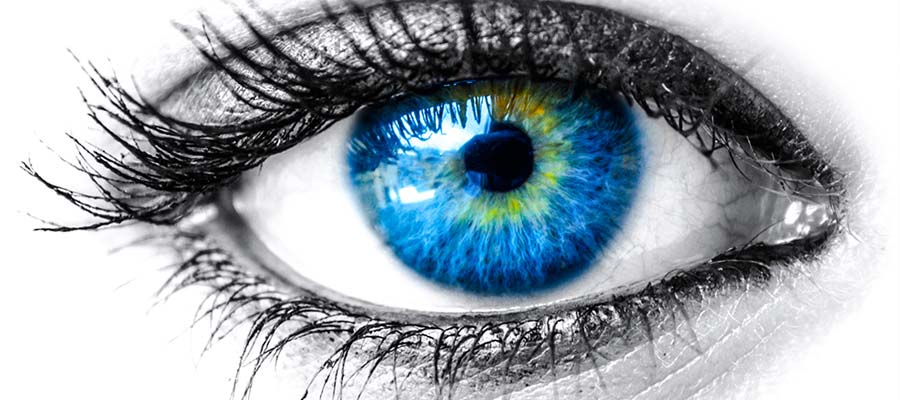Have been thinking about LASIK? Are you still not sure exactly what it’s all about? We’ve put together some of the basic, but most important, information you need to know to help you make that decision. Also, make sure to consult your eye care professional to really get a clear picture of what LASIK is and what to expect during your procedure.
The cornea is the part of the eye that focuses the light in order to form the image on the retina. It bends and focuses the light, a process known as refraction. Sometimes the shape of the cornea is not as it should be, and the images are focused either in front or behind the retina. These are the refractive errors and they are quite common. Everyone that wears glasses has such an issue.
The solutions for refractive errors include glasses, contact lenses and various types of surgeries. Among them, we have the LASIK surgery, and we will discuss all about it in this article.
LASIK is a surgical procedure where a laser is used to correct refractive errors (myopia, hyperopia or astigmatism). It is the most common eye surgery, and the name comes from Laser-Assisted in Situ Keratomileusis. Its main purpose is to reshape the cornea so that the light is focused exactly where it should be.
It is an easy surgery that is performed in about 15 minutes without any pain. But the results are amazing, the patient getting good vision again, without having to wear glasses or contact lenses (in most cases). For those who are not suited for LASIK, they can also get a different surgery such as PRK, LASEK or other types. Discuss with an eye doctor in order to find the right type of surgery for you.
The surgeon begins by creating a circular “flap” in the cornea either with a laser or a precise surgical tool. The flap is folded back (it is not removed completely) so that the surgeon now has access to the tissue below (the stroma).
Using a precise excimer laser, the surgeon then removes the needed amount of tissue so that the cornea has the right shape. The removed quantities of tissue are microscopic so that the light is then focused properly. For people with myopia the idea is to flatten the cornea, while for those with hyperopia the goal is to make it steeper. Those with astigmatism have a cornea with an irregular shape, so in this case LASIK is used to create a normal shape.
After the desired shape is achieved, the surgeon carefully places back the flap in its position. The cornea will heal naturally, and no stiches are needed. As mentioned before, the operation is quick and pain free. The patient will only require some anesthetic eye drops, and no stiches or bandages will be used.
LASIK Surgery Candidates
To be suited for this surgery you must have a mild form of myopia, hyperopia or astigmatism. If someone has 2 of these errors, the surgery can still be performed and cure both. The cornea also needs to have the proper thickness for the surgery to be performed.
In order to find out if LASIK is the right type of surgery for you, the doctor will perform various tests. He will make sure that your eyes are healthy enough for the procedure and he will evaluate the current shape of the cornea. He will also use a corneal topographer in order to measure the curvature of the eye and to create a “map” of it.
If available, the doctor can also use a wavefront analysis in order to have an even more precise view of your eyes. He will also take a look at your health history and medications in order to determine if LASIK is suited for you.
In case you are wearing contact lenses, you need to stop wearing them about 2 weeks in advance of the exam, in order for it to be precise (lenses can affect the shape of the cornea).
As mentioned before, the procedure takes 10 to 15 minutes, it doesn’t involve any pain or stiches and a few days are needed for the vision to stabilize. Depending on the clinic and the country you are living in, the costs can vary between $1,500 to $2,500 per eye.
During Surgery
Before starting, the doctor will apply some anesthetic eye drops and possible also relaxation medication, for you to be calm. You will be placed under the laser and a lid speculum will be placed on your eyes in order to keep them wide open.
As described above, the surgeon then creates a flap and the excimer laser is used to reshape the cornea. Everything happens at a microscopic level. You will be asked to look at a certain light and the surgeon will check through a microscope that everything goes smoothly.
You may feel a bit of pressure on your eyes, but no pain should be present. It takes around 5 minutes for each of the eyes.
After Surgery
You may feel a burning or itching sensation in your eyes and it is recommended to go back home and rest for the remaining of the day. No hospitalization is needed. You are not allowed to drive until the doctor sees you again the next day and confirms that you are able to drive.
You may have a blurry vision that day, but it will go away the next day. Your sight will slightly improve during the next few days, until it will be accurate. For some people it happens immediately, while others require a few weeks.
You may go back to work the next day, but it is recommended to take a few days off and rest. Also avoid strenuous exercise, as this can affect the healing process of the eyes. The doctor will tell you when to come back for a check-up. Also avoid rubbing your eyes, as this may affect the flap that needs some time to adhere back to the eye.
Benefits
Depending on how advanced your refractive error is and other factors, the surgery may give you a perfect 20/20 vision or a 20/40 vision or less. Some people are fully healed, while others will still may need to wear glasses or lenses (just a much lower prescription level than before).
Some people may need lenses with anti-reflective coating or photochromic lenses. Discuss this with your doctor or an eye care professional. Others may also need a follow-up procedure a few months later in order to improve sight even further.
Complications
In some rare cases an infection can occur, or the patient may get night glare. This means getting starbursts or halos when viewing bright lights during the night (this includes night driving).
LASIK is usually a safe surgery with a high rate of success, but it’s better to analyze all aspects and discuss them with your doctor before proceeding.
We hope this information helps you understand a little bit more about LASIK and maybe helped answer some of your questions. Please consult with your eye care professional about and see if you’re a candidate for this wonderful procedure. Thank you for reading.


